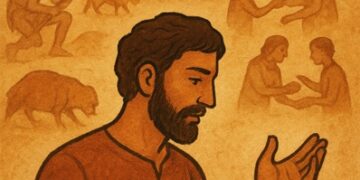By: Arshid Qalmi
In recent years, the integration of technology into education has been hailed as a transformative development. Digital tools have revolutionized learning, making knowledge accessible and classrooms interactive. However, this advancement has also sparked concerns about the unintended consequences of extensive technology use, particularly on students’ creativity and critical thinking. A balance is essential to harness the benefits of technology without undermining these vital skills.
Technology often promotes passive consumption of content rather than active engagement. Platforms such as YouTube and Wikipedia provide ready-made solutions, which may discourage students from exploring problems independently. According to a study by Greenfield (2009), this over-reliance hampers deep analytical thought and originality, reducing the capacity for creative problem-solving.
The continuous exposure to technology shortens attention spans, a trend supported by a Microsoft study (2015) that found the average human attention span had dropped to 8 seconds, likely due to digital multitasking. Shortened attention spans make it difficult for students to delve deeply into topics, a process critical for developing creative ideas and complex reasoning.
Social media and search engines employ algorithms that create echo chambers, reinforcing existing beliefs rather than challenging students to think critically. Pariser’s concept of the “filter bubble” (2011) highlights how this limits exposure to diverse viewpoints, a crucial component of critical thinking.
AI tools such as ChatGPT and Grammarly, while invaluable for certain tasks, can inhibit the natural process of ideation and problem-solving. A 2023 study by Sharma and Gupta in Indian Journal of Education and Development noted that students relying on AI tools demonstrated a decline in originality in essay writing tasks.
The National Education Policy (NEP) 2020 emphasizes the cultivation of critical thinking and creativity as core objectives of the Indian education system. It highlights the need for experiential learning, multidisciplinary approaches, and the integration of art and technology in education to foster these skills. However, it also warns against the misuse of technology that may lead to passive learning.
NEP 2020 states: “While technology has immense potential to revolutionize education, its role must be carefully guided to ensure it does not replace human creativity, interaction, and exploration.” (NEP 2020, Chapter 24.3)
A study conducted by the National Council of Educational Research and Training (NCERT) in 2021 surveyed 2,000 secondary school students across India. It revealed that 68% of students heavily relying on digital tools for assignments rarely employed critical evaluation or independent reasoning. Similarly, a 2022 report by NITI Aayog highlighted how excessive screen time is inversely related to students’ participation in extracurricular activities, including art, music, and debate, which are crucial for fostering creativity.
As highlighted by NEP 2020, experiential learning methods like project-based assignments and fieldwork can stimulate critical thinking. By immersing students in real-world problem-solving scenarios, they can leverage technology as a tool rather than a crutch.
Schools and parents can introduce scheduled “no-screen” times to allow students to engage in offline activities, such as reading, playing sports, or pursuing hobbies. A study by Kumar and Rajan (2020) in Education Today found that students who reduced their daily screen time by 30% exhibited improved cognitive flexibility and originality in their assignments.
To counter algorithmic bias, students should be trained in media literacy. Workshops on identifying credible sources, analyzing data critically, and questioning biases can enable them to use technology responsibly. NEP 2020 also stresses the need for such digital and information literacy programs.
Art-based learning, including music, painting, and storytelling, should complement technology-driven education. A UNESCO report (2019) highlights how integrating arts into STEM (Science, Technology, Engineering, and Mathematics) curricula enhances creative thinking, giving rise to the STEAM model.
Teachers must shift from being mere dispensers of knowledge to facilitators of inquiry. According to Mishra and Shukla (2021) in The Indian Educational Review, educators who used guided inquiry methods saw significant improvements in students’ ability to analyze problems critically.
Governments and educational boards should ensure that EdTech platforms comply with standards that promote active engagement and discourage passive consumption. NEP 2020 recommends periodic review of digital education tools to align with pedagogical goals.
While technology has undeniably enriched education, its unchecked use risks compromising the very skills that define holistic development—creativity and critical thinking. Striking a balance, as envisioned by NEP 2020, requires a multifaceted approach: experiential learning, digital detox, media literacy, and the integration of arts. As educators, parents, and policymakers, we must reimagine how technology is utilized in classrooms to ensure it empowers students without curbing their innate potential for creativity and critical thought.
Through informed interventions, we can ensure that the promise of technology in education is fulfilled without sacrificing the foundational skills necessary for the innovators and problem-solvers of tomorrow.
Aqalmi303@gmail.com




